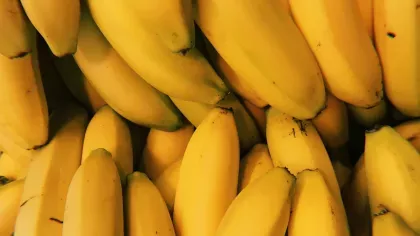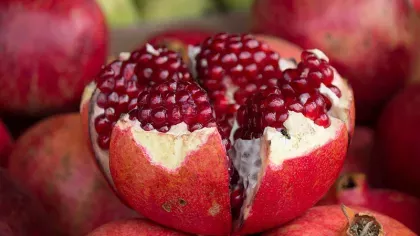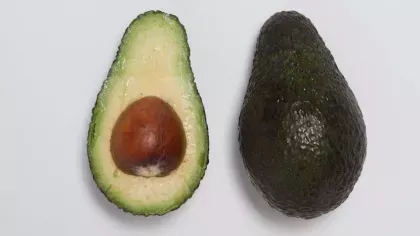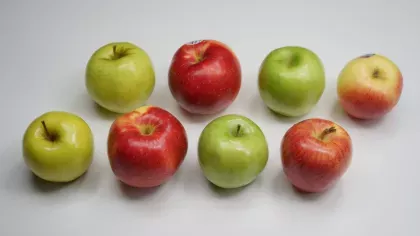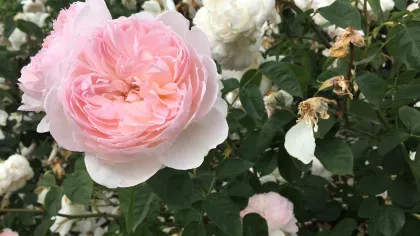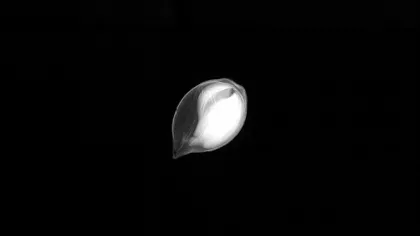
Apple
On this page
Found in ancient myths and delicious desserts, apples are enjoyed all over the world.
They were likely first domesticated over 4000 years ago in Central Asia, and then travelled west along the Silk Road to Europe.
With the development of grafting, where the stem, leaves and fruit of one plant are joined with the roots of another, apples became far easier to grow and led to the development of a range of cultivates varieties (cultivars).
Today, there are more than 7,500 recognised apple cultivars, each with different flavours, colours, textures and sized fruit.
In 2020, over 86 million tonnes of apples were produced globally, with almost half coming from China.
Plant description
Apple trees are deciduous, growing up to 5m tall in cultivation and 10m tall in the wild. The leaves are alternately arranged on branches, dark green in colour, and oval-shaped with a serrated edge. Apple blossoms are white to pale pink and develop in the spring at the same time as the budding of the leaves. Flowers are 3-4 cm in diameter, with five petals. Most commercial apple fruits are up to 8cm in diameter with red, yellow, green or pink skin. The flesh is whitish, sometimes with a pink or yellow tint.





Plant uses
Cultural
In Christian mythology, apples are frequently depicted as the forbidden fruit in the Garden of Eden.
In Greek mythology, Hercules collected the golden apples from the tree of life in the Garden of the Hesperides as part of his Twelve Labours.
Also in Greek mythology, Eris, the goddess of discord, threw a golden apple into a wedding party which indirectly set off the Trojan War.
In Norse mythology, the apples of Iðunn were said to provide gods with eternal youth.
On Rosh HaShanah, the Jewish New Year, it is traditional to eat apples with honey to welcome a sweet new year.
Food and drink
Apples are used in a range of sweet dishes, including apple pie, apple crumble, apple cake, baked apple and stewed apple.
Apples are used to make a number of drinks, including apple juice and apple cider.
Apples are also often used as a flavouring in savoury foods, including stuffing and in sausage meat.
Applewood is used to smoke various meats and cheeses.
Materials and fuels
Wood from apple trees is dense and tough, so it is used to build objects and furniture that need to be durable.
The bark of apple trees can be used to make a yellow dye.
Did you know?
Despite the famous saying ‘An apple a day keeps the doctor away’, 100g of apple provides less than 10% of the recommended daily levels of most vitamins and minerals.
The modern domesticated apple was cultivated from a wild apple known as Malus sieversii, found in Central Asia, which is now listed as vulnerable to extinction due to habitat loss.
Until the 17th century, the term apple was used in English to refer to every fruit that wasn’t a berry. This includes dates (fingeræppla), bananas (appel of paradis) and cucumbers (eorþæppla, meaning ‘earth-apple’).
The species name of the apple, domestica, refers to its cultivated status. The genus name, Malus, stems from the ancient Greek word for fruit, 'melon'.
The seeds of apples contain a compound called amygdalin, which is made of sugars and cyanide, although not in high enough quantities to be dangerous to humans.
Where in the world?
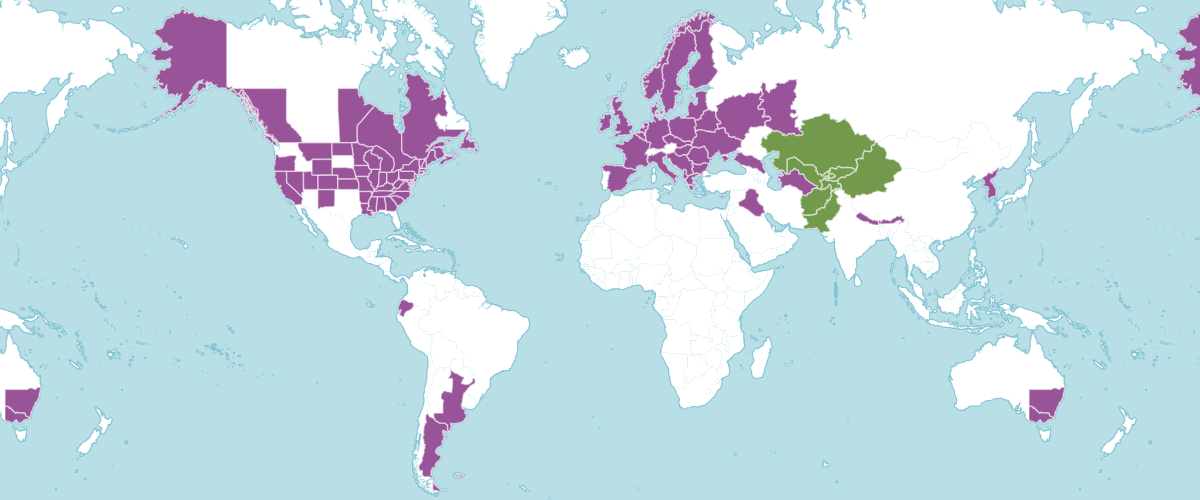
Most cultivars are adapted to temperate climates and prefer fertile, cool, damp soil. Suitable for sandy and loamy soils.
Find it in our gardens
Kew Gardens
A botanic garden in southwest London with the world’s most diverse living plant collection.
Location
View map of Kew GardensBest time to see
Our work
Kew scientists have been working alongside the Global Crop Diversity Trust to collect seeds from wild relatives of apples and 28 other key food crops, and conserve them in our Millennium Seed Bank.
There’s a huge amount of diversity across apple cultivars, but many varieties have been lost because they don’t meet the commercial standards for appearance, or are susceptible to diseases.
Apples are susceptible to many pests and diseases, such as fungal disease applescab, powdery mildew and fireblight. As these diseases evolve, diversity in apple crops will be needed to ensure food security.
The greatest source of genetic diversity comes from crop wild relatives, which can be used in breeding programs to protect our foods from disease and environmental stress.
